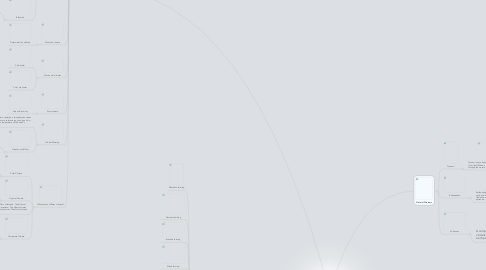
1. World Climate Regions
1.1. Tropical climates
1.1.1. No dry season
1.1.2. Dry season
1.2. Arid climates
1.2.1. Warm and dry
1.2.2. Hot and dry
1.3. Warm humid climates
1.3.1. Wet all year
1.3.2. Dry winter
1.3.3. Dry summer
1.4. Tropical storms
1.4.1. Hurricanes
1.4.1.1. Hurricanes affect North America and Atlantic Ocean.
1.4.2. Cyclones
1.4.2.1. Cyclones affect Australia, India, Asia and Madagascar.
1.4.3. Warm air rises and is replaced by cool air. Cold air blows inward in a spiral, creating a tropical disturbance.
1.4.4. Typhoons
1.4.4.1. Typhoons affect west Pacific Ocean, Asia
1.4.5. Blizzards
1.4.5.1. Blizzards affect North America, West Europe and East Asia.
1.5. Mountain climate
1.5.1. Determined by altitude
1.6. Continental climates
1.6.1. Cold winter
1.6.2. Cold, dry winter
1.7. Polar climate
1.7.1. Very cold and dry
1.8. Global Warming
1.8.1. The past two centuries, atmosphere has been capturing more solar energy, causing a slow increase in temperature on the earth's surface.
1.8.2. Greenhouse Effect
1.8.2.1. Shortwave radiation enters the atmosphere. Heat energy is radiated back as longwave radiation. Heat is captured by greenhouse gases and kept in the armosphere
1.9. What causes different climate?
1.9.1. Polar Climate
1.9.1.1. Severe winters and cool summers
1.9.2. Tropical Climate
1.9.2.1. Hot tempera tures in every season and a lot of moisture
1.9.3. The factors are: the effect of latitude. The effect of moving air(winds and pressure). The effect of water bodies. The effect of mountains. The effect of ocean currents.
1.9.4. Temperate Climate
1.9.4.1. Moderate temperature conditions year round
2. Agriculture
2.1. World Agriculture
2.1.1. Plantation farming
2.1.2. Nomadic herding
2.1.3. intensive farming
2.1.4. Mixed farming
2.1.5. Grain farming
2.1.6. Dairying
2.1.7. Ranching
2.1.8. Little ot no agriculture
2.1.9. Subsistence farming
2.1.10. Rice farming
2.2. World soils
2.2.1. Forest/Woodland soils-fertility varies
2.2.1.1. Podzol-often acid and poot in nutrients
2.2.1.2. Grey and brown-fertile and rich in humus
2.2.1.3. Ren-yellow podzol-intermediate in fertility
2.2.2. Grassland Soilds-can be very fertile, may need irrigation
2.2.2.1. Chernozem or "black earth"
2.2.2.2. Chemozem and brown
2.2.3. Desert Soils-often shallow and stony, but may be fertile if irrigated
2.2.3.1. Red and grey
2.2.4. Tropical and Subtropical Soils-low fertility
2.2.4.1. Red and yellow soil (rain forest)
2.2.4.2. Dark arey and black
2.2.5. Other Soils
2.2.5.1. Mountain soils-fertility varies
2.2.5.2. Tundra soils-permafrost
3. Landforms
3.1. Fold Mountains
3.1.1. Fold mountains from slowly as two plates move together, bending up sedientary rock layers
3.2. Plains and Lowlands
3.2.1. The erosion shield regions created the rest of each continent. River and glaciers carried sediment into ancient seas.
3.3. Ancient Shields
3.3.1. Shields regions were created by widespread volcanic billions years before.
3.3.2. Pangaea
3.4. Active volcano
3.4.1. A composite cone forms alternating layers of cinders and magma. The cone grows higher with each period of volcanic activity.
4. Natural Disasters
4.1. Tsunami
4.1.1. Tsunami cause by an earthquake shakes sea floor itself. When is happen, tremors race through the water outward in a circular pattern.
4.2. Earthquakes
4.2.1. Earthquakes happen because the crust is in motion. Rock can bend a bit, until it snaps and moves all t once. Tremendous energy release at the point, called the epicentre.
4.3. Volcanoes
4.3.1. A composite cone forms alternating layers of cinders and magma. The cone grows higher with each period of volcanic activity.
